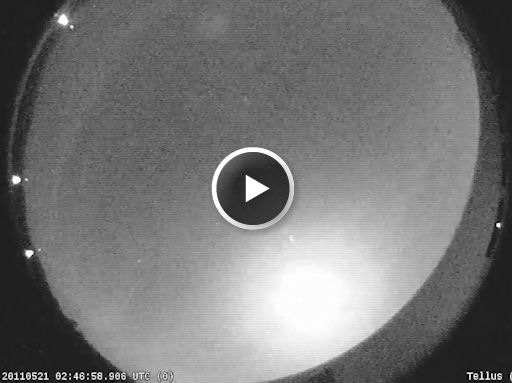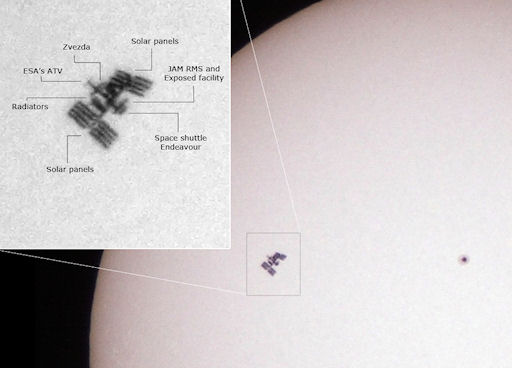What's up in space? COMET FIREBALL - FLYBY FLURRY & QUIET SUN
QUIET SUN: Solar activity is very low. NOAA forecasters say the chance of strong flares during the next 24 hours is less than 1%. COMET FIREBALL: Residents of Atlanta, Georgia, and surrounding areas were startled on Friday night, May 20th around 10:47 EDT, when an object brighter than a full Moon streaked across the southern sky. "It appears to have been a disintegrating piece of comet," reports Bill Cooke of NASA's Meteoroid Environment Office. In a1/3-speed video, recorded by a NASA fireball camera at the Tellus Science Museum in Cartersville, GA, fragments can be seen flying away from the bright exploding core. Using data from multiple cameras, Cooke was able to triangulate the fireball's flight path. "Before it hit Earth, this object was in an orbit much like that of Halley's Comet." That doesn't mean the fireball came from Halley's Comet itself, but rather that it belongs to the Halley Family. Cooke continues: "This icy, fragile object was about 2 meters wide, hit the atmosphere at a speed of 38.5 km/s (86,000 mph), and completely disintegrated about 60 km above ground." Observers along the ground track reported bright blue-green flashes, luminous sparkles, and distinct fireball-shadows. "It was the brightest event we've seen in the three year history of our meteor network," adds Cooke. The comet-chunk broke into at least four fragments. Cooke is analyzing the dynamics of each one to learn more about the parent body and to find out if any pieces might have reached the ground. Stay tuned for updates. FLYBY FLURRY: In recent days, the quiet face of the sun has provided a nice backdrop for a flurry of non-solar activity: Observers in Europe are reporting multiple transits of the International Space Station and space shuttle Endeavour across the solar disk. This specimen obtained on May 22nd comes from Alex Conu of Furculesti, Romania: "This was the second ISS transit I observed in less than a week," says Conu. "I could have seen a third, but I was just too busy to watch. The details we can see in the silhouette of the docked spacecraft are just amazing." Astrophotographers who wish to take this kind of picture themselves can find daytime transit predictions at Calsky.org. Of course, seeing the ISS at night is wonderful, too. More Silhouettes: from Maximilian Teodorescu of Bucharest, Romania; from Tamas Ladanyi of Veszprem, Hungary; from Mihai Curtasu & Vlad Dumitrescu of Furculesti, Roumania; from Vlad Dumitrescu of Alexandria, Romania; from Riccardo Rossi of Terrazzo (VR), ITALY; from Riccardo Rossi of San Biago (MO), ITALY Provided by Space Weather News |

